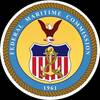On a route with direct competition from LoLo carriers, WWL is shipping power generation components from Brazil to a hydroelectric power plant in Chile.
Chile’s electricity system depends mostly on thermoelectric and hydroelectric power, and the components are to play a central role in two new-build hydropower plants in Alto Maipo, Chile. When open later this year, the underground plants will generate an expected 2,320 GWh of power into Chile’s national grid every year.
The latest piece of equipment shipped to Chile by WWL was a 120-tonne rotor, with bulky dimensions of almost five metres width and depth, and three metres tall. Getting this item safely to the upper section of the Maipo River, southeast of Santiago, was the responsibility of freight forwarder Brasil Projects.
The 120-tonne rotor was successfully shipped directly from Santos to San Antonio in 35 days. It was the heaviest item handled so far by the WWL team in Santos, and a new roll trailer purposely-designed for heavy cargo was successfully used for the first time. Such roll trailers allow heavy cargo to be securely stowed and rolled on and off the vessel. This keeps lifting to a minimum, even when transhipment is required.
Brasil Projects used to rely on lift-on lift-off (LoLo) vessels for bulky cargo, but were not satisfied with the risk involved nor the reliability of departures. WWL’s roll-on roll-off (RoRo) North America to South America liner service directly competes with LoLo carriers on the segment from Santos, Brazil, to San Antonio, Chile.
Thiago Gonçalves from Brasil Projects switched to RoRo because the operation is safer and more reliable than with LoLo. “The solution also has a defined transit time”, he says.
“Once the customer realised there would be an overall cost saving, they agreed to a trial shipment with a smaller piece, which was successful. We are now shipping their cargo on a regular basis”, explains Raphael Liberato, WWL’s Commercial Manager for Latin America.
Complex cargo not a problem
Because the cargo was intended to be loaded on to LoLo vessels, it was designed with lifting points only at the top.
This meant there were no points suitable for lashing in the other parts, which would have compromised the safe shipment on roll trailers.
However, after a workshop involving the freight forwarder and manufacturer, and operational team meetings with engineers from the production plant, lashing points were successfully added to the cargo to prepare it for a successful RoRo shipment.
Increased demand in South America
“We always receive a good service, from the quotation until the loading operation at the port. Over the last year, we have significantly increased our operational volume with WWL”, says Gonçalves.
The successful shipment followed the shipment of a stator, the unique top part of the power generation system with similar weight to the rotor but even bigger dimensions.
The demand for breakbulk shipments has increased in South America and WWL is well placed to meet the increase. From March 2018, the number of sailings on the route increases from two to three.



